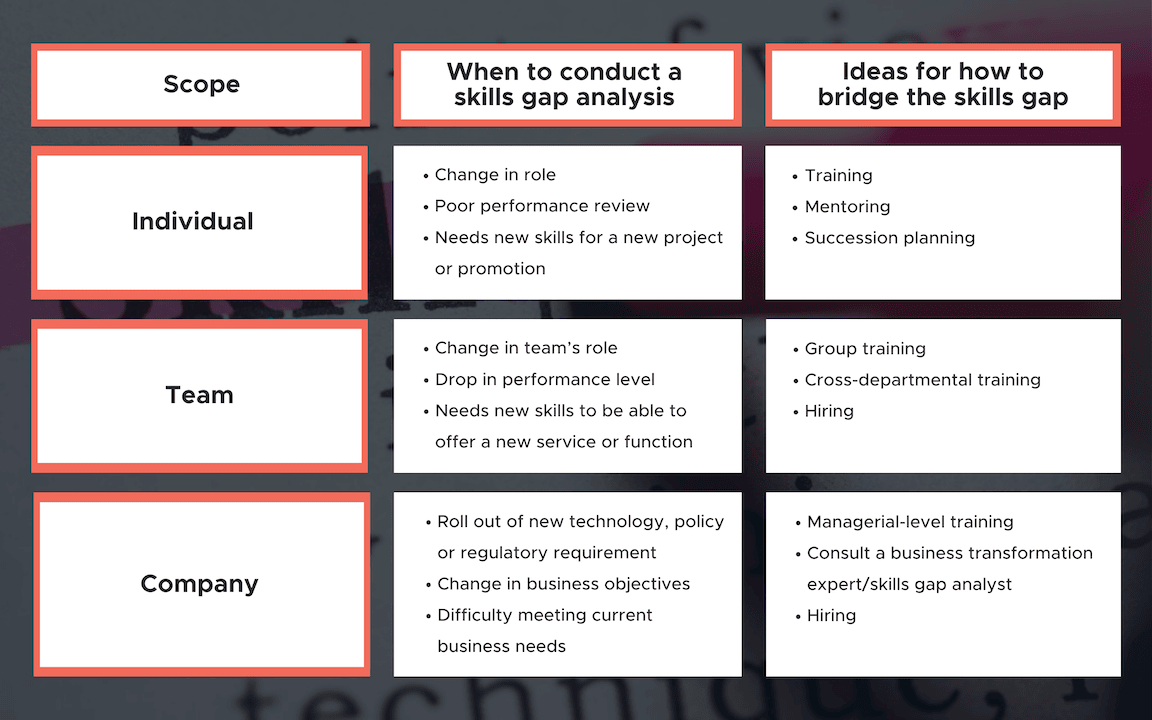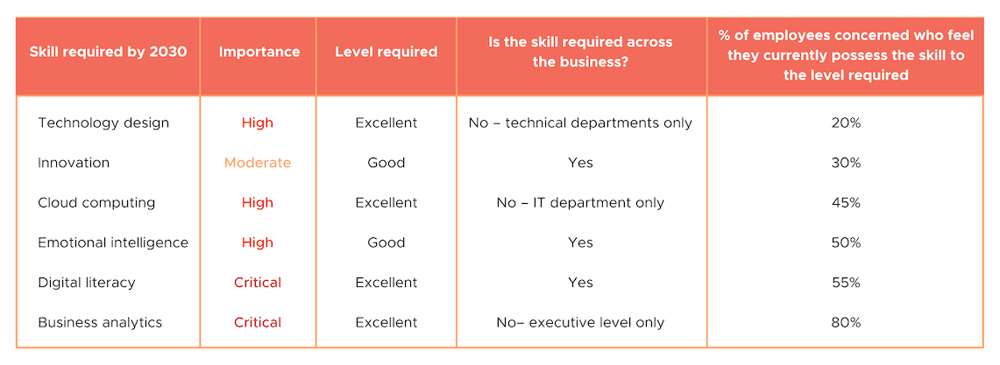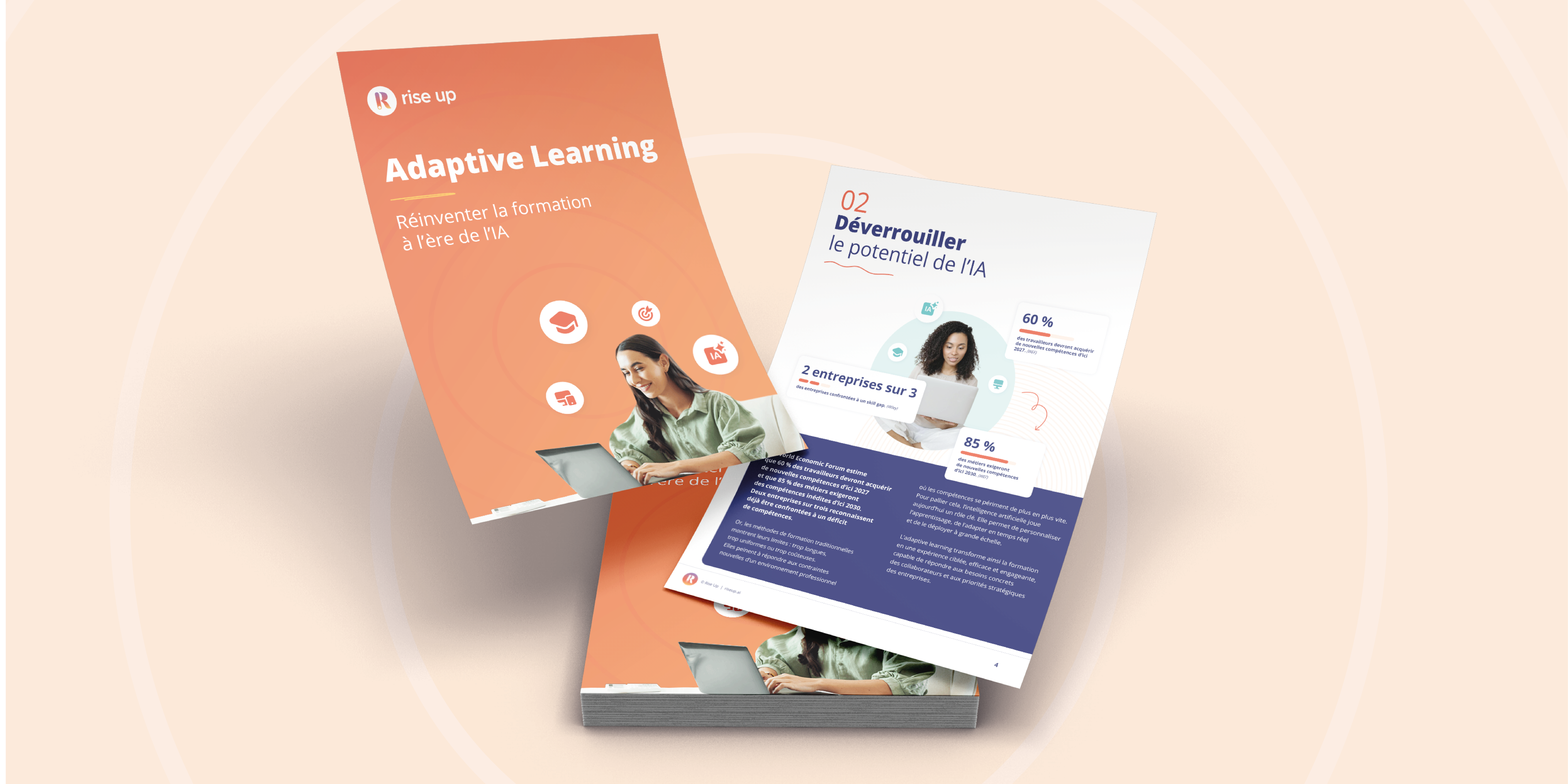The skills gap: what is it and how to close it
8 minutes of reading | 2022-05-12
Have you ever struggled to find the right person for a role, no matter how hard you tried to advertise the job and provide a generous rewards package?
You’re not alone. According to a report published by the Open University, more than two-thirds of employers have struggled to recruit workers with the right skills. And this skills gap costs organisations an eye-watering £4.4 billion in recruitment fees, temporary staffing and increased salaries.

However, conducting a skills gap analysis can help you to ascertain the skills you need to achieve your business objectives ahead of need, as well as ensure that you attract and retain the best candidates.
Depending on the role, certain combinations of hard and soft skills will be preferred over others. But what about durable and perishable skills? And where do transferable and essential skills fit in?
What is the skills gap?
The skills gap is the difference between the skills that a workforce currently has compared with the skills that organisations want or need their workforce to develop.
While technology is already having a huge impact on ways of working, it seems that many companies are overlooking the importance of human talent. By 2030, it is reported that there will be a total talent deficit of 85 million workers (or $8.452 trillion in unrealised revenue globally), driven by a shortage of skills, not people.
How dwindling investment in training has caused a widening skills gap
Investment in training has seen a gradual decline since the 1970s, with many organisations opting for the quick fix of procuring new talent rather than taking the time to invest in existing talent. Over a period of several decades, this has resulted in a global talent crunch, which presents a real crisis as new technologies continue to advance, and talent pipelines become increasingly limited.
Part of the problem is how employers see their employees. Rather than reactively cherry-picking talent to fulfil a specific job, companies need to proactively focus more on their existing workforce and see their staff as partners who are willing to learn and grow as the organisation evolves. In short, they need to embed learning at every level so that employees can take the time to learn new skills for the future or hone the skills they already have.
How can I conduct a skills gap analysis?
Step 1: Plan
There are two ways you can perform a skills gap analysis: either for individual employees or for groups (e.g., a specific team, or even the company as a whole).

Step 2: Identify important skills
Once you’ve undertaken a skills gap analysis at an individual, team or company level, you’ll hopefully have a better idea of the scope of the project. However, you still need to think about the skills that you value and the skills that you need to succeed now and in the future.
With regard to identifying the skills that you value, it might be worth asking your clients why they choose to work with you over another company. What is it about the skills in your organisation that set you apart?
As for determining the skills you need, you could ask team members through informal surveys or feedback days.
You should also think about the direction that your business is heading in. What are your goals and objectives for the next 5 or 10 years? How do you plan to get there? Then, bring it back to your employees. How confident do they feel about meeting these future business needs, based on their current skill set?

For example, in the table above, it can be seen that while technology design is regarded as important, only 20% of employees feel they have sufficient expertise in this area. However, this skill is only required by technical departments, rather than the business as a whole – so a targeted training programme could be a great way to plug the skills gap here.
Digital literacy, on the other hand, is seen as business critical and is required by all employees, yet just under half of employees feel they don’t possess this to the required level (‘excellent’). This particular skills gap therefore requires a more concerted approach to level up digital skills across the business. For instance, you could offer e-learning courses on some key digital skills and add some in-person workshops (as part of a blended learning approach).
Step 3: Measure current skills
There are several ways that you can measure the current skill levels of employees, such as through:
- Feedback forms
- Skill level assessments
- Appraisals
Similar to the approach taken in step 2, you can then identify the importance of each skill, the level required, and how well employees feel that they master it.
For instance, if a sales manager is required to have a high level of negotiation skills, and this skill is deemed critical to success in their role, the organisation needs to ensure that the manager’s skills in this area are refreshed regularly and kept above a certain level.
Step 4: Act on the data

How can I bridge the skills gap in my organisation?
Most employees will be happy to learn new skills and grow with the organisation. Ultimately, though, in bridging the skills gap, the onus is on employers to drive change forward by creating or expanding training programmes.
This starts with a vision. Where is your organisation going, and what do your employees need to learn to accompany you on this journey?
Then, it’s about being proactive and putting the vision into practice. Employers have a huge opportunity to transform their workforce through learning and make their organisation highly agile, resilient and innovative – but employees need to be shown the way.
This isn’t an exact science. You might decide to roll out a training programme on a particular skill and later decide that you want to make the course more specific, or more practice-based than theory-based.
Similarly, you might find that as you’ve been developing your training on a particular skill, a different skill has become more important to your organisation and needs to be prioritised. Don’t be disheartened by this – being a learning organisation is all about adaptability.
Where blended learning comes in
Fortunately, thanks to blended learning, it has never been easier to develop and hone training programmes.
For instance, let’s say you are running a training course to educate your employees on a new regulation. You’ve built the modules and uploaded the content, and you’ve managed to get most people to sign up for it. However, you notice that the completion rate is quite low, and many trainees don’t pass the end-of-course assessment first time. Moreover, you overheard someone the other day saying that they found the content really dry and unengaging. What can you do?
Well, with blended learning, you can:
Easily make the course mandatory for everyone – in just a couple of clicks, you can make your course a requirement for employees in a certain department, or even across the whole business. This will help to increase the sign-up rate.
Adapt the course content to make it more engaging – if trainees are struggling to engage with the course, try using a mix of formats. For example, combine e-learning quizzes with in-person group activities, where you can ask employees to explain what they understand about the regulation and how they would apply it in practice.
Ensure that trainees truly understand the content, rather than trying to complete the course as quickly as they can – you could do this by adding end-of-topic quizzes at the end of each e-learning section, which will prevent trainees progressing to the next topic unless they achieve a certain score. Alternatively, you could alternate in-person seminars with online lectures. That way, trainees can’t just speed ahead and will have to focus on the material, lesson by lesson.





